Are you new to the game of golf and want to ensure you have all the clubs you need? Here are the types of golf clubs you’ll need to know as a golfer. Click on each of the links to learn more about what each club is used for, key design features and pictures of each.
- Driver
- Fairway woods
- Hybrids
- Driving irons
- Long irons
- Mid irons
- Short irons
- Wedges
- Pitching Wedge
- Gap/approach wedge
- Sand Wedge
- Lob Wedge
- Putter
Table of Contents
Driver
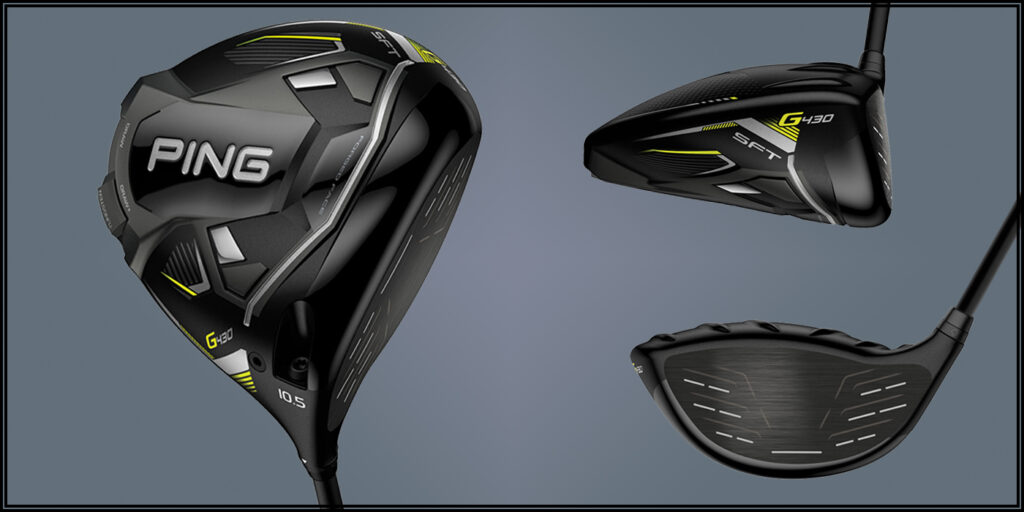
- Loft: 8 to 15 degrees
- Length: 44 to 46 inches
- Head size/characteristics: USGA legal limit of 460cc driver club head size
Key features
The driver has 8 to 15 degrees of loft and a large 460cc head designed to give golfers maximum distance. In addition, the driver has the longest shaft length in the bag, with the average being around 45 inches long. Custom fitting options are available, but many golfers prefer to hit their tee shots with a standard-length driver. The driver is often the most expensive individual club in the bag, as it is made from very thin titanium, allowing it to be super light but very strong.
When is a driver used?
A driver is used off the tee box. Because of the large size of the driver and the golf club components used to build it, the driver is rarely hit off the ground, even by professional golfers.
Fairway woods
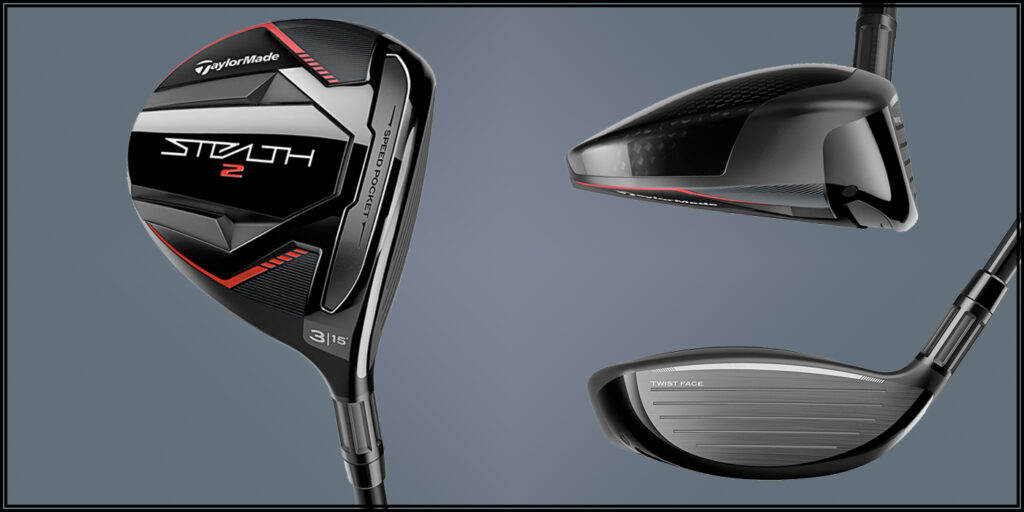
- Loft: 14 to 27 degrees
- Length: 41.25 to 43.25 inches
- Head size/characteristics: 130cc to 170cc
Key features
You can think of a fairway wood as a mini driver. It is made out of thin metal (usually a steel alloy), it is smaller in size, has a flatter sole and the club face is not as tall. These features make it more useful from the fairway but mean you only need to tee it up very slightly above the ground if you are hitting it off a tee.
Just to make things confusing, fairway woods come in numbers 3, 5, and 7-woods, but how these are made varies from manufacture to manufacture. The loft is the most important factor to look at, as this dictates how far and how high your fairway shots with fly.
When is a fairway wood used?
Fairway woods can be used from the tee box or from the fairway. With a fairway wood, expect good distance, and a penetrating ball flight, but slightly less forgiveness than a driver if you miss-hit it. However, if you strike a fairway wood well, shots will stay straighter than a driver, as the extra loft generates more backspin.
Fairway woods are often used as an approach shot to a green on a longer par 4 or a par 5, most good shots with a fairway wood will allow the golf ball to hit the ground and then roll out a bit.
Hybrids
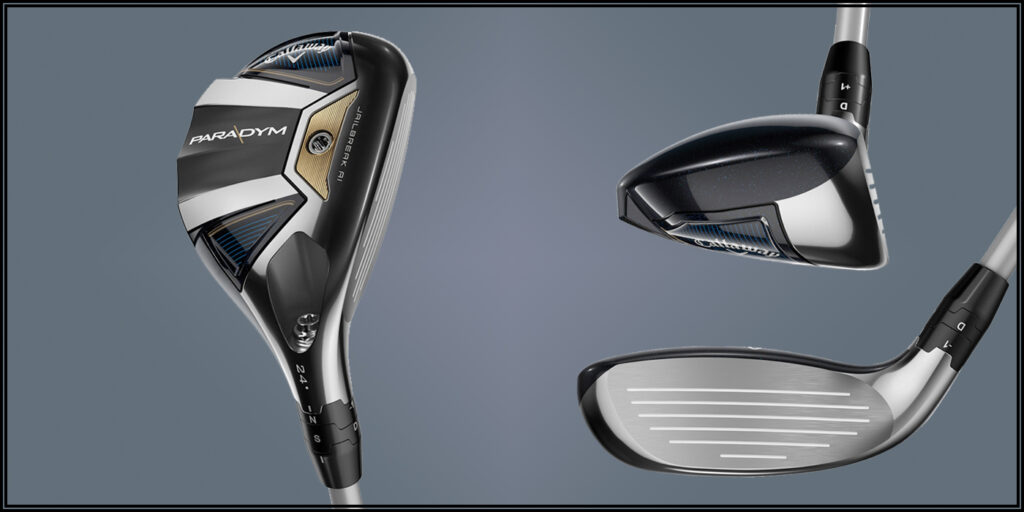
- Loft: 18 to 27 degrees (sometimes higher)
- Length: 39-40.5 inches
- Head size/characteristics: The face of an iron, with the body of a small fairway wood.
Key features
Hybrids are a mix between a fairway wood and iron. Hybrid clubs have become some of the most popular in recent years, as they make it easier to get around the golf course without having to use long irons. Hybrids are especially helpful to have in the golf bag when hitting out of the rough. The most common hybrids are the 3, 4, and 5 hybrid.
But again, not all 3 hybrids are made with the same loft, so be sure to check the loft when trying to decide which one to buy. There will be an overlap between how far fairway woods and hybrids go. A good rule of thumb is to make sure you have 3-4º of loft separating each club.
If you had an 18 degree fairway wood and an 18-19º degree hybrid they would go almost identical distances when hit well. For a full guide on fairway woods vs hybrids, check out this guide.
When is a hybrid used?
A hybrid can be used off of a tee box when playing a par 3 or a shorter par 4. In addition, hybrids are good for hitting out of the rough or a more difficult lie. Hybrids are a great club to use when approaching a green from a distance, as they have a higher ball flight and can often stop a little easier than a fairway wood.
Driving Irons
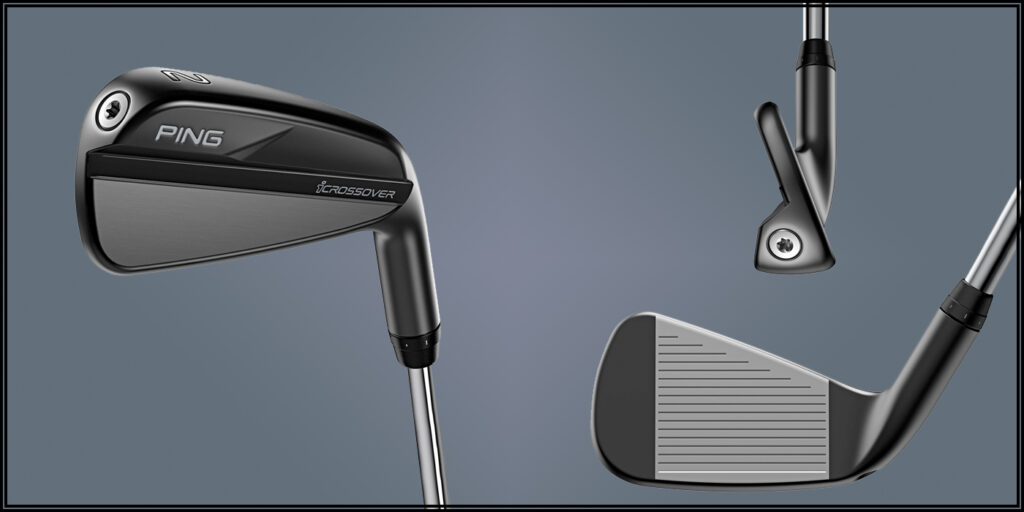
- Loft angles: 17-25
- Length: 38.5-39.5
- Head size/characteristics: looks like a long iron with a wider sole and often with a hollow body
Key features
The driving iron is for golfers who want something other than a hybrid or fairway wood but still need more forgiveness than a traditional long iron. Years ago, driving irons were used on the tee box to replace a driver, but now they have found more of a place in the game by becoming a utility club. The driving iron or utility iron tends to appeal to the lower handicap player who needs more workability in their shots to the green.
Driving irons are less forgiving than hybrids but can launch the ball much lower, with less backspin.
When is a driving iron used?
A driving iron or utility iron is a great club for hitting a stinger off a tee box; you can also use it for a second shot on a par 5 if you want to get your ball up close to the green.
As you can imagine, they become particularly useful when playing in the wind, and/or on Links golf courses, where the ball rolls a long way. The trade-off is that they are less useful when hitting into greens as do not fly as high and roll out more.
Long Irons
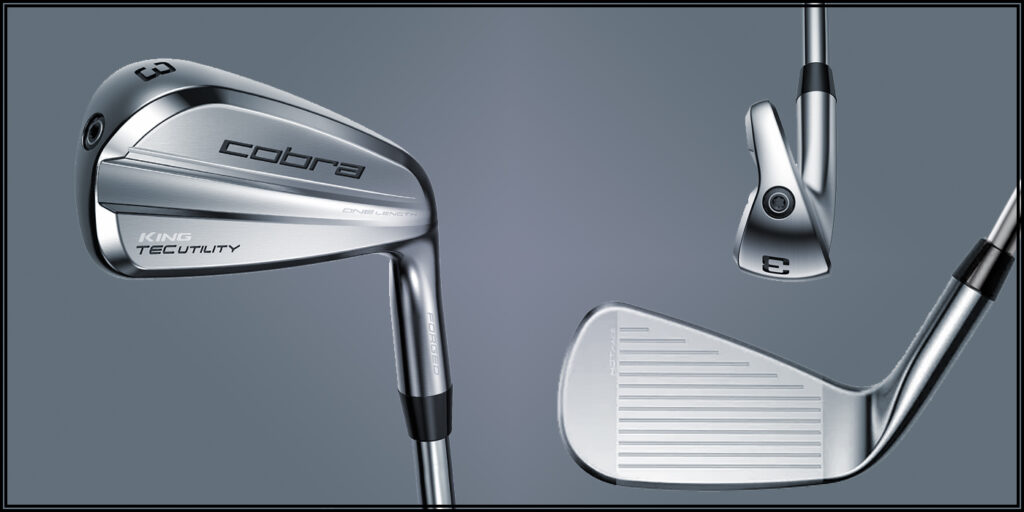
- Loft angles: 17 to 24
- Length: 38-39 inches
- Head size/characteristics: long irons are considered the 2, 3 and 4 irons
Key features
The 2, 3 4 & 5 irons are the long irons in the golf bag. If you are shopping for new golf clubs, you may have had a hard time finding a 2 iron in your set as they are rarely produced. Hybrids and utility irons have replaced most long irons, as they are far more forgiving. Long irons have a lower loft angle, small head size and the longest shaft length out of the irons – a difficult combination for beginner and high handicap golfers.
For this reason, you’ll see beginner golf club sets replace long irons with a mix of fairway woods and hybrids.
When are long irons used?
The long irons are used for full shots to the green, but they need to be struck well and often need high amounts of club head speed for golfers to see the difference between each long iron.
These clubs take a long time to master, so don’t worry if they are not your favourite clubs to begin with. Over time you should start to use long irons off the fairway from over 150 yards and on longer par 3’s.
Long irons are very difficult to use out of the rough, so always favour a hybrid from the rough, as these glide through the long grass.
Mid Irons
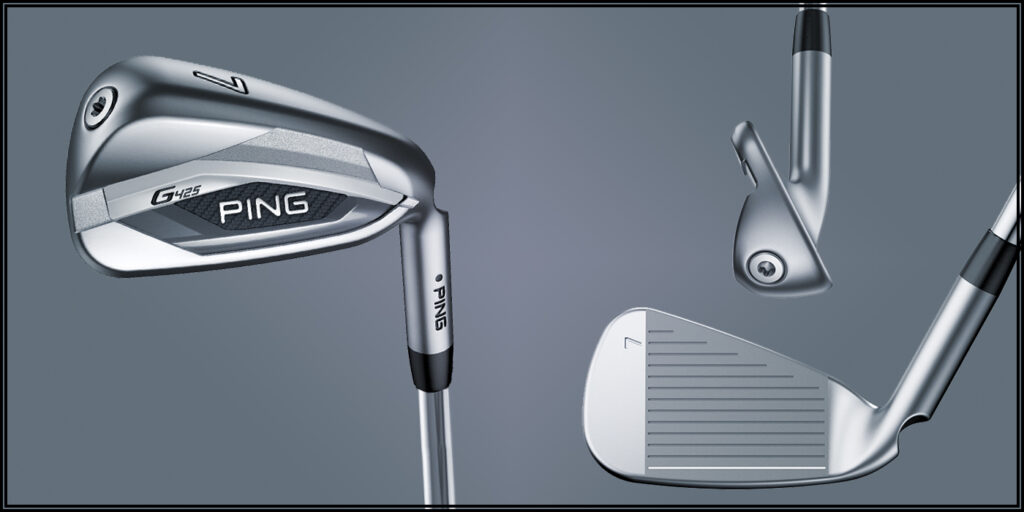
- Loft angles: 22-35 degrees
- Length: 37-38 inches
- Head size/characteristics: mid irons are considered the 5, 6, and 7-iron
Key features
The mid irons are some of the most used golf clubs in golf club sets. Amateur golfers hit a lot of 7 iron shots into a green, regardless of swing speed. The mid irons have slightly higher ball flight and impressive stopping ability on the green, and they can be manipulated to help you hit half shots and even punch shots. Many believe the best golf irons to start learning the game with are the 7 and 6 irons.
When is a mid iron used?
The mid iron is played directly from the fairway or rough from within 150 yards, or on short par 3 holes. Some golfers will also use a mid iron to hit chip shots or pitch shots around the green, to produce a low chip that will roll a long way once it lands.
Short Irons
- Loft angles: 32 to 47 degrees
- Length: 35.75 – 36.5 inches
- Head size/characteristics: short irons are considered the 8 and 9 irons
Key features
The short irons are the scoring clubs. The shorter irons are more forgiving as their length is easier for most golfers to manage. When hitting fairway shots with the short irons, you should be able to get plenty of spin on the ball because of the higher loft angle these clubs have in place. Even players with slow swing speed will notice they can get a short iron up in the air.
When are short irons used?
A short iron is used when approaching the green; the short iron flies high and not as far as other irons. The short irons are more about accuracy than they are about distance, and most golfers hit short irons straighter (less slice or hook) due to the additional backspin that is created by the high loft of the short irons.
Wedges
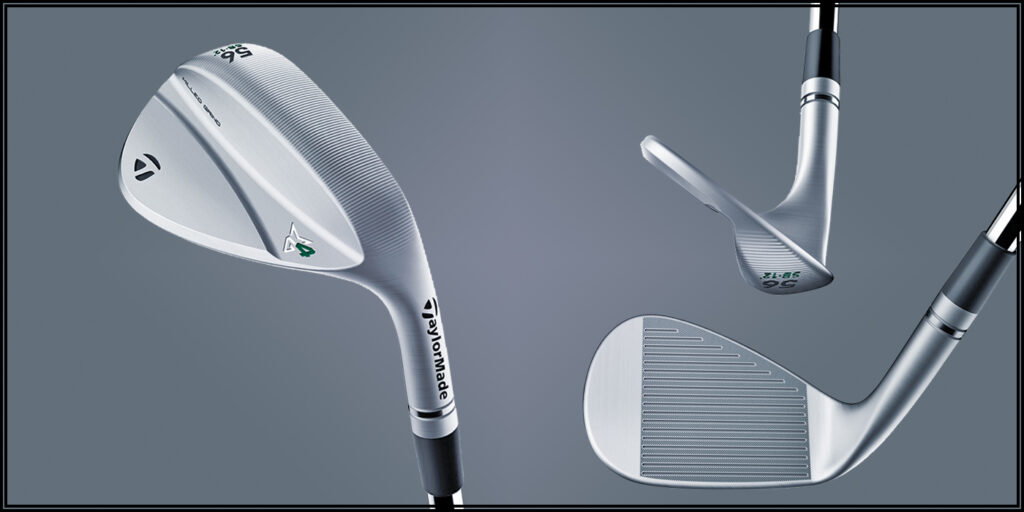
- Loft angles: range from 42 to 64 degrees
- Length: 35.75-35 inches
- Head size/characteristics: pitching wedges, gap wedge, sand wedge, lob wedge, game improvement irons can have a bulkier look and more forgiveness, and players’ style are more sleek blade wedges
Key features
Wedges still look like an iron but have higher loft, meaning they hit the ball higher and not as far short or mid irons. They tend to be heavier, and, as you can see in the picture above, have different shapes ground from their sole – this helps them to be used from many different lies from around the green.
The names of wedges and wedge loft angles are other areas that can seem complicated at first, so we have a whole article on that in the link above. If you want to learn more about wedge bounce and wedge grind types check these links too.
When is a wedge used?
Wedges are used anywhere around the green and can be used for shorter full shots into the green (inside 100 yards). If you are hitting bunker shots, trying to get the ball on the green from just short, or hitting a little bump and run to roll toward the pin, your wedges are great clubs for the job.
One of the most important skills you can learn with your wedges is how to control the distance.
Putter
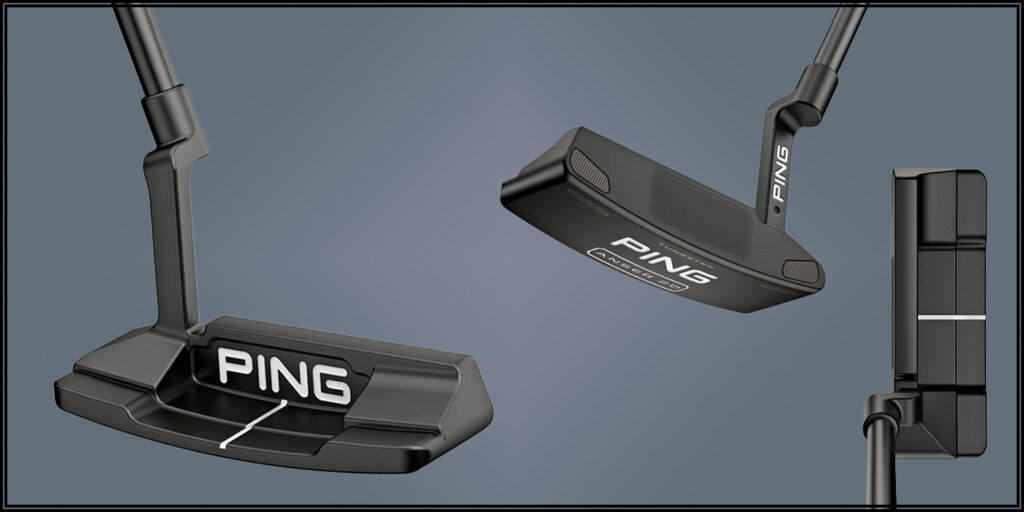
- Loft angles: 2 to 6 degrees
- length: 32 to 35 inches
- head size/characteristics: blade or mallet putter style heads
Key features
A putter is used to roll the ball into the hole. Golfers are often surprised to learn that putters have some loft. This helps the ball pop up from its starting point and start to roll along the grass (putting greens are often cut to 3-6mm long).
There are blade and mallet style putters, toe-weighted and face-balanced putters and many more options. All are good options when you start learning to play the game. The most commonly used are blade-style putters with some amount of toe-weighting.
You can dive deeper and learn more about types of putters here.
When is a putter used?
The putter is used on the putting green from any distance. You can also use the ball from just off the green if you feel it will help you get the ball close. In extremely dry, links conditions you may also see golfers use a putter from 30-yards off the green when there is very little grass.
Frequently Asked Questions
The United States Golf Association has regulations for all clubs in your golf bag. Golf irons, wedges, and especially the drivers have club head restrictions for both weight and size. Here are a few of the most commonly asked questions about the golf clubs in your bag.
What are the 4 main golf clubs?
The four main golf clubs are woods, irons, wedges, and putters. If you have a mix of these in your golf bag, it’s going to be much easier to play a complete round of golf.
How many types of golf clubs are there?
There are 10 types of golf club names you will hear used drivers, fairway woods, hybrids, utility clubs or driving irons, long irons, mid irons, short irons, wedges, and putters. There are also sub-categories of wedges.
What are the 3 most used golf clubs?
The 3 most used golf clubs are the driver, the wedge (usually a pitching wedge), and a putter. Of course, the golf course you are playing and your player handicap will dictate which clubs get used the most.
Final Thoughts
Although new golf clubs are always coming to market, these categories remain the same and are the ones beginners what to know and understand. Different golf clubs make the game of golf more playable. The rules of golf state that we can only have 14 in our bags at one time, but if you want more, you can buy more than 14 and switch them depending on the course and conditions you play in.
Happy golfing.

